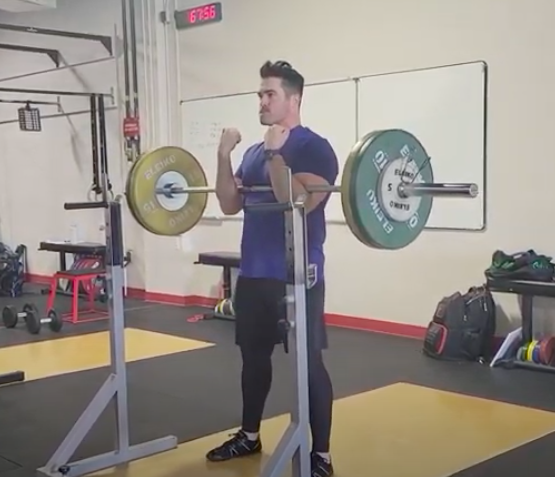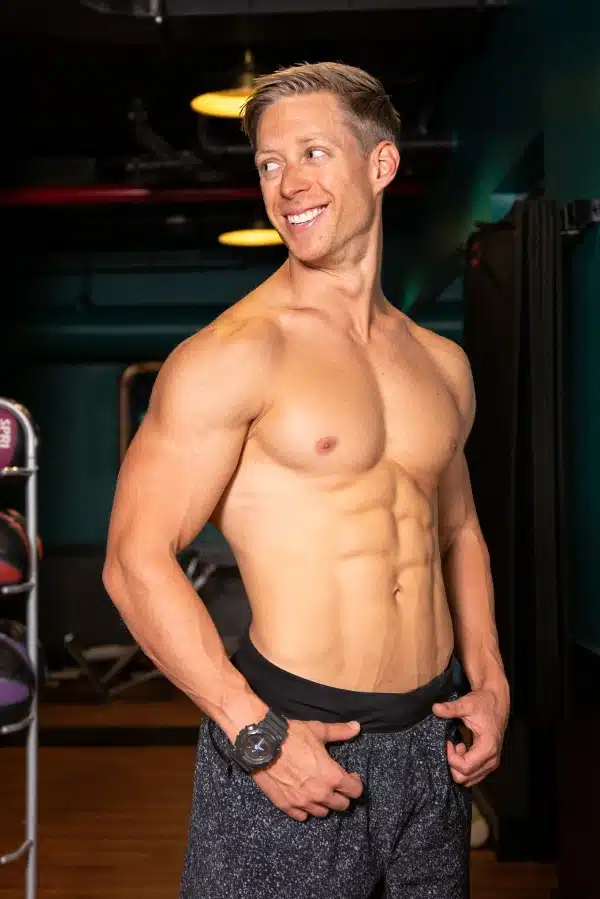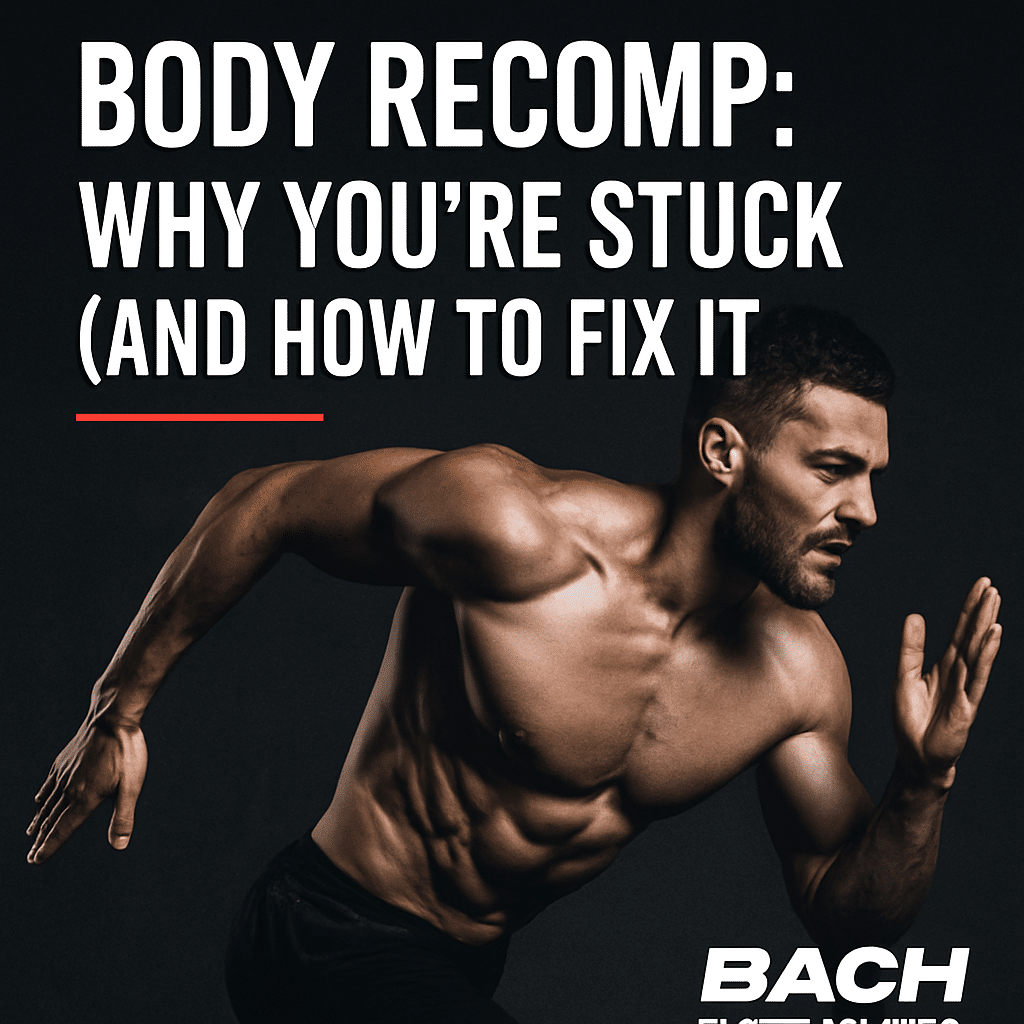Zercher Squat: The Best Damn Lower Body Exercise You’ve Never Done
December 10, 2021
The Zercher Squat is are the best exercise you’re not currently doing.
They’ll help you build muscular, athletic legs, powerful traps, big biceps, and bulletproof abs.
Here is your step-by-step guide to mastering this beast builder.
What is a Zercher Squat?
The Zercher Squat is a front-loaded Squat pattern (meaning the bar rests on the front of the body, not the back as in traditional powerlifting squats). The unique bar placement shifts some of the attention to the Rectus abdominous, transverse abdominous obliques, and smaller muscles of the lower back as well.
So how does the Zercher Squat differ from a Front Squat?
Zercher Squats are a different beast. The weight rests in the crooks of your elbows. Sounds weird and uncomfortable, right? That’s part of the magic of the exercise and why it’s an incredible abs and arms builder.
Here’s a video to demonstrate: Zercher Squats
Who invented the Zercher Squat?
Ed Zercher, who was a strongman from the 1930s and ’40s, was the creator of the Zercher Squat. Its creation was bore out of necessity. Ed’s gym didn’t have a Squat rack, so he had to find another way to train his Quads, and he got creative.
By Deadlifting the weight from the floor to his stomach and then transferring the weight to the crooks of his elbows, Ed had created a devastatingly effective way to train his legs without a squat rack.
Due to his popularity at the time and his impressive strength totals, many people began to adopt some of his training methodologies and exercises. As a member of the USAW (the United States All-round Weightlifting Association), Ed was given the opportunity to meet with and discuss various training methods and exercises, and by the 1960s, the Zercher Squat became a sanctioned exercise in the USA events.
Zercher Squat Benefits: Why Should You Do Them?
Aside from looking like a badass, zercher squats are one of the best bang for your buck exercises if you’re looking to maximize strength and muscle size in minimal time.
Zercher Squats build your abs and core stability.
When you load the bar in your elbows, one of the first things you’ll notice is that your entire body wants to topple forward.
Your abs are forced to contract and stabilize your spine, helping you build muscular, deep-cut abs and an injury resilient core.
Unlike front and back squats, the load is very close to your core on a zercher squat. This proximity increases the force required from the core to maintain stability. The natural tendency is to allow the lower back/mid back to round and take some of the stress off the core/abs. Your abs contract harder to keep your spine aligned.
Zercher Squats will improve your other big lifts.
Zercher Squats will skyrocket your totals in other big lifts like the squat, deadlift, and bench press.
The position of loading and subsequent requirement for core activation carries over into other exercises exceptionally well.
Want stronger Squats? Zercher will help make it happen. Want stronger Deadlifts? Zerchers will make it happen.
Need a stronger bench? Zercher squats can make that happen.
Improving your core strength and stability will skyrocket your strength on every lift.

Zercher Squats build muscular quads.
The Front-loading pattern in Zercher Squats hammers your quads with unmatched effectiveness.
The positioning lends itself to much greater activation of the muscles responsible for flexing the knees (quads) and less of the hips(Hammies and glutes). Most other Squat variations provide a lot of activation through the hips, taking some of the strain off of the quads and sharing the load (great for overall muscle development, but not so great for the quads themselves).
Joint friendly Squatting
Zercher squats are difficult when you get started. They’re about as comfortable as getting punched in the crotch by Mike Tyson. But due to the difficulty, you’re going to use less weight.
Less weight but greater muscle activation is a blessing in disguise.
There will be less wear and tear on your joints. Less wear and tear makes zerchers a great option for getting jacked without beating the snot out of your body.
Obliterate Strength Plateaus
Most lifters hit plateaus in their big lifts primarily due to weakness in their trunk and/or upper back. For the reasons mentioned above, zercher squats can help you breakthrough with much less joint stress than squatting, deadlifting, or bench pressing multiple times per week.
Are you rounding your upper back in Deadlifts and Squats? Zercher Squats will build the bulletproof core and thick meaty traps required to maintain the integrity of your spine and make those PR weights into “for reps” weights.
Are you struggling to get out of the hole in your squats? Stronger quads in the end ranges are a no-brainer with Zercher Squats.
Are you struggling to stay tight on your Bench? Stronger traps and lats from your Zercher Squats will help here too!
Muscular Shock and Exercise Novelty
Remember back when you first started lifting and you were adding weight to the bar every session you trained?
You were making newbie gains. Newbie gains happen during the initial phases of training when the stimuli from listing leads to the fastest progress of your life.
Fortunately, zercher squats can provide a similar training stimulus because they’re so different than other exercises.
When your body isn’t accustomed to a stressor, it will adapt very quickly to try to be better prepared for that stress in the future.
The longer you train, the shorter-lived these adaptations will become, and you must find new ways to produce the novelty that will create the new stresses to adapt to.
Enter the Zercher Squat.
Because of its unique loading pattern and demands on the core, traps, and legs, it is a force to be reckoned with in our search for more gains. It is a sure-fire way to bust you out of your next training rut.
This massively effective variation is going to have you experiencing those newbie style gains all over again. Imagine the thrill of being able to add more weight to the bar with each new training session, just like the good old days!
You’ll have to start a little lighter than you’d like.
But every session, you’ll add a little more weight and a little more weight.
Then you’ll be on cloud nine as you keep getting those sweet, sweet newbie gains!
How to Zercher Squat: Movement and Programming
Alright, now that we know what the hell a Zercher squat is, where it came from and why you must start to incorporate it into your training plans, let’s talk about how to Zercher squat and how best to make it work in your programming.
The Movement
Many of the mechanics will be very similar to your more traditional front and back squat variations, with the major change of holding the bar in your elbows.
Check out the video demo here.
The Set-up
- Choose whether to pick the bar up from the floor as Ed Zercher would have or step out from the rack with the bar.
- Whichever way you choose, make sure to keep the core braced and shoulders set as you move the weight into position in your elbows.
- Set your feet for the movement, your feet should be about hip-width apart and pointed forward or can be angled out slightly if needed for your hip mobility (it is quite alright to set your feet with a slight outward angle, especially if that allows for greater depth in your squat).
The Descent
- Now that you are set, it is time to begin; initiate your descent by pushing your hips back.
- Lower yourself down into a seated position. Ideally, you want your hips to drop below your knees at the bottom of the movement while maintaining as upright of a torso as you can (this is where your core bracing, I mentioned, comes into play). This should place most of the emphasis on the muscles of your thighs, known as the quads, and a bit of tension on the hips, core, and traps/shoulders as well.
- Make sure you control the movement (I like to envision pulling myself down toward the floor) and stay braced as you descend and reach the bottom.
The Ascent
- Maintaining your strong core and shoulder brace, begin to push the floor away with your entire foot, trying to stand up tall as you do so.
- With the weight in your elbows, you are likely to notice some pulling forward as you move to stand (particularly as the weight gets heavier and your core and shoulders start to struggle to compensate).
- Again moving with purpose and intent will enhance your stability and results as you move through this movement.
- Reset and complete your next rep until you have completed all the desired repetitions for your set.
The Programming
Now that the how of performing a Zercher Squat is out of the way let’s talk a bit about how to program it into your workouts. The best strategy for your programming is to choose the goal and then choose the rep range and total volume. Below are my starting recommendations for you.
For Strength: 1-5 reps per set for 5-15 reps total volume
For Muscle Size/Hypertrophy: 8-12reps per set for 35-45 reps total volume
For Muscle Endurance/Fat Loss: 15-20+ per set for 50+ reps total volume
Match your training goal to your Nutrition and recovery to maximize your progress and results. I would advise incorporating Squats into your routine 2-3 workouts per week for best results. Mixing and matching the volumes above can also be great for minimizing boredom and generating more results from your training through greater intensity and intention.
That’s a Wrap
So there you have it, some background and education on the most effective squat you’d never heard of (before now), the Zercher Squat. Some tips on how to incorporate it into your training regime and step-by-step instructions on its execution.
Now go forth and dominate your workouts!
Author Bio
Jason Ward is a Health and Human Performance Specialist based out of Halifax, Nova Scotia. Follow him on Instagram for daily coaching.
He has over 15 years of experience working with athletes and desk jockeys from all walks of life. His career as a coach started in 2006 while studying for his Kinesiology degree at Acadia University, and over the years, his relentless pursuit of improved performance for himself and his clients has to lead him to obtain dozens of different certifications from DTS Kettlebell to TRX, to Strength and Conditioning Specialties, to Nutrition and body transformation specialties, etc.
His passion for helping others is evident in his empathetic approach to coaching and the numerous success stories of his clients.








